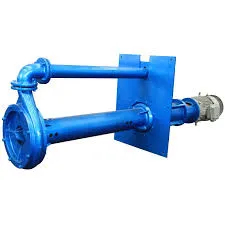Swedish
- Afrikaans
- Albanian
- Amharic
- Arabic
- Armenian
- Azerbaijani
- Basque
- Belarusian
- Bengali
- Bosnian
- Bulgarian
- Catalan
- Cebuano
- Corsican
- Croatian
- Czech
- Danish
- Dutch
- English
- Esperanto
- Estonian
- Finnish
- French
- Frisian
- Galician
- Georgian
- German
- Greek
- Gujarati
- Haitian Creole
- hausa
- hawaiian
- Hebrew
- Hindi
- Miao
- Hungarian
- Icelandic
- igbo
- Indonesian
- irish
- Italian
- Japanese
- Javanese
- Kannada
- kazakh
- Khmer
- Rwandese
- Korean
- Kurdish
- Kyrgyz
- Lao
- Latin
- Latvian
- Lithuanian
- Luxembourgish
- Macedonian
- Malgashi
- Malay
- Malayalam
- Maltese
- Maori
- Marathi
- Mongolian
- Myanmar
- Nepali
- Norwegian
- Norwegian
- Occitan
- Pashto
- Persian
- Polish
- Portuguese
- Punjabi
- Romanian
- Russian
- Samoan
- Scottish Gaelic
- Serbian
- Sesotho
- Shona
- Sindhi
- Sinhala
- Slovak
- Slovenian
- Somali
- Spanish
- Sundanese
- Swahili
- Swedish
- Tagalog
- Tajik
- Tamil
- Tatar
- Telugu
- Thai
- Turkish
- Turkmen
- Ukrainian
- Urdu
- Uighur
- Uzbek
- Vietnamese
- Welsh
- Bantu
- Yiddish
- Yoruba
- Zulu
Telephone: +86 13120555503
Email: frank@cypump.com
dec . 03, 2024 19:06 Back to list
submersible sewage pump specifications
Submersible Sewage Pump Specifications A Comprehensive Overview
Submersible sewage pumps play a critical role in modern wastewater management systems. Designed to operate while submerged in fluid, these pumps are essential for transferring wastewater, sewage, and other sludge-like materials from lower to higher elevations or for discharge into treatment facilities. Understanding the specifications of submersible sewage pumps is crucial for selecting the right model for particular applications.
Key Specifications
1. Power Rating The power rating of a submersible sewage pump is typically measured in horsepower (HP) or kilowatts (kW). Common ratings range from 1 HP to over 10 HP. The power requirement is contingent upon the volume of wastewater, the height of the lift (the distance the pump needs to move the water), and the specific application for which the pump is being utilized.
2. Flow Rate The pump’s flow rate, expressed in gallons per minute (GPM) or liters per second (L/s), indicates the volume of water the pump can efficiently move. This specification is pivotal, as it dictates how quickly wastewater can be evacuated from the system. Submersible sewage pumps typically have flow rates ranging from 30 GPM to over 3000 GPM. The desired flow rate will depend on the volume of sewage generated in a particular setting, like residential, commercial, or industrial applications.
3. Total Dynamic Head (TDH) Total dynamic head indicates the total height that the pump can lift water, accounting for both vertical lift and losses from friction and velocity. It is measured in feet or meters. Understanding the THD is essential, as it influences the performance and efficiency of the pump. Pumps commonly have a TDH ranging from 10 feet to over 100 feet, indicating their operational capabilities.
submersible sewage pump specifications

4. Material Construction The materials used in the construction of submersible sewage pumps are critical for ensuring durability and resistance to corrosion and abrasion. Common materials include cast iron, stainless steel, and thermoplastic. Cast iron is often favored for its strength and longevity but may require more maintenance in corrosive environments. Stainless steel, while more expensive, offers superior resistance to rust and degradation.
5. Impeller Design The impeller is a vital component that contributes to the efficiency and capability of the pump. Closed impellers are generally more efficient and better suited for cleaner fluids, whereas open impellers can handle solids and sludge more effectively. Specifications may also include different designs meant to minimize clogging and facilitate the transport of solids ranging from 1 inch to 2.5 inches in diameter.
6. Motor Type Submersible sewage pumps can utilize different types of motors, including single-phase and three-phase. Single-phase motors are typically used for residential applications, while three-phase motors are better suited for industrial settings, providing more power and efficiency.
7. Operating Depth This specification refers to the maximum depth at which a sewage pump can function effectively. Many submersible pumps are designed to operate at depths ranging between 10 to 20 feet, but some models can withstand greater pressures, allowing for deeper installations.
Conclusion
Selecting the right submersible sewage pump involves a thorough understanding of its specifications, including power rating, flow rate, total dynamic head, construction materials, impeller design, motor types, and operating depth. By evaluating these essential factors and matching them to specific wastewater management needs, system designers and operators can ensure efficient performance, reliability, and longevity of the pump. With advances in technology, modern submersible sewage pumps continue to become more efficient and user-friendly, making them indispensable in the safe handling of wastewater across various applications.
-
Horizontal Split Case Pump with GPT-4 Turbo | High Efficiency
NewsAug.01,2025
-
ISG Series Pipeline Pump - Chi Yuan Pumps | High Efficiency, Durable Design
NewsAug.01,2025
-
Advanced Flue Gas Desulfurization Pump with GPT-4 Turbo | Durable & Efficient
NewsJul.31,2025
-
ISG Series Vertical Pipeline Pump - Chi Yuan Pumps | Advanced Hydraulic Design&Durable Construction
NewsJul.31,2025
-
ISG Series Vertical Pipeline Pump - Chi Yuan Pumps | Energy Efficient & Low Noise
NewsJul.31,2025
-
pipeline pump - Chi Yuan Pumps Co., LTD.|High Efficiency&Low Noise
NewsJul.31,2025










